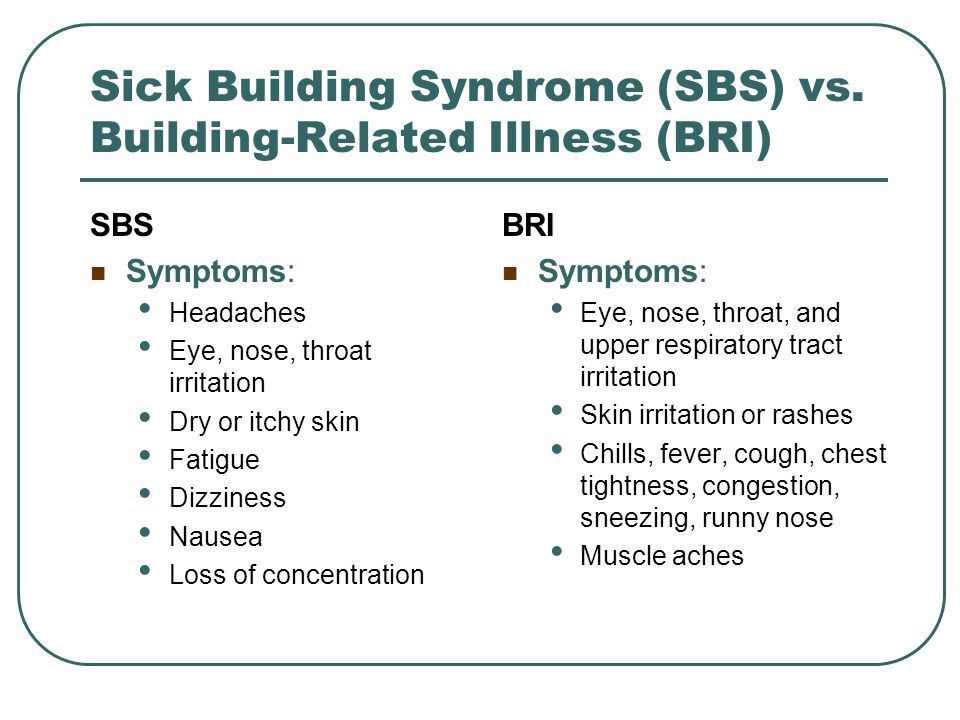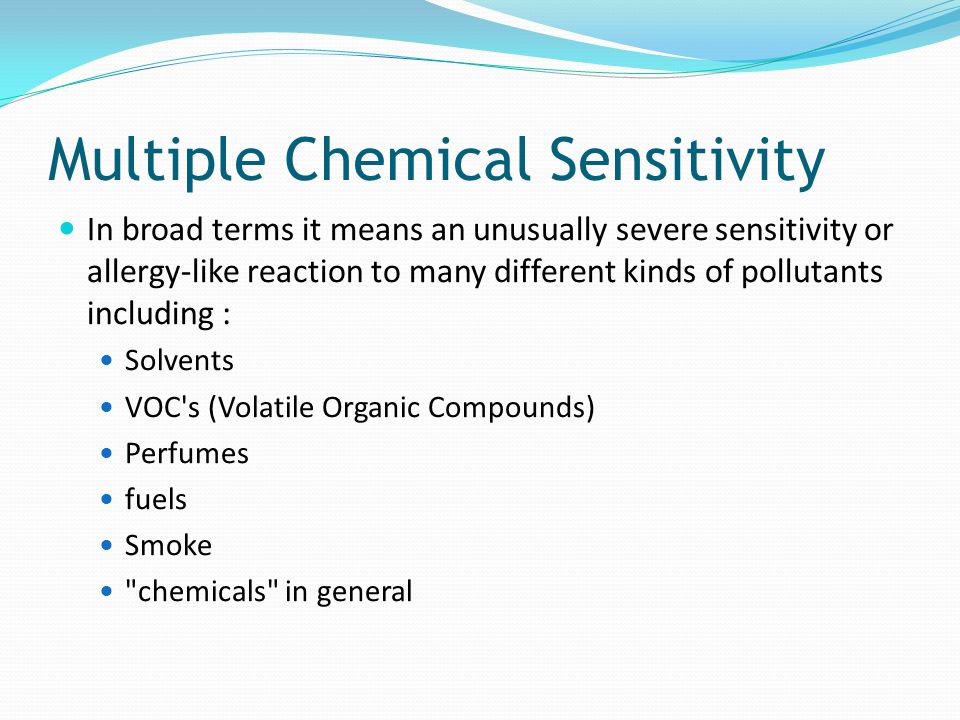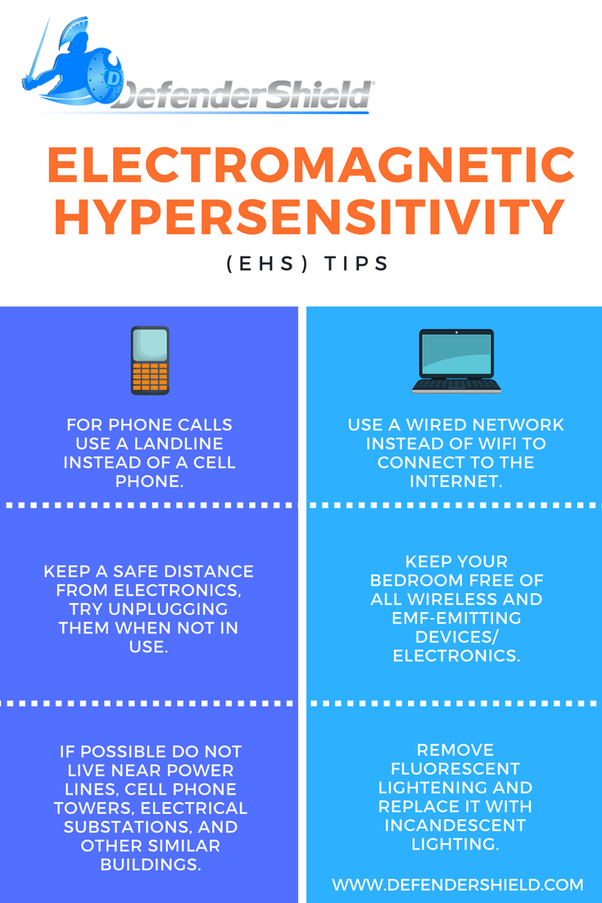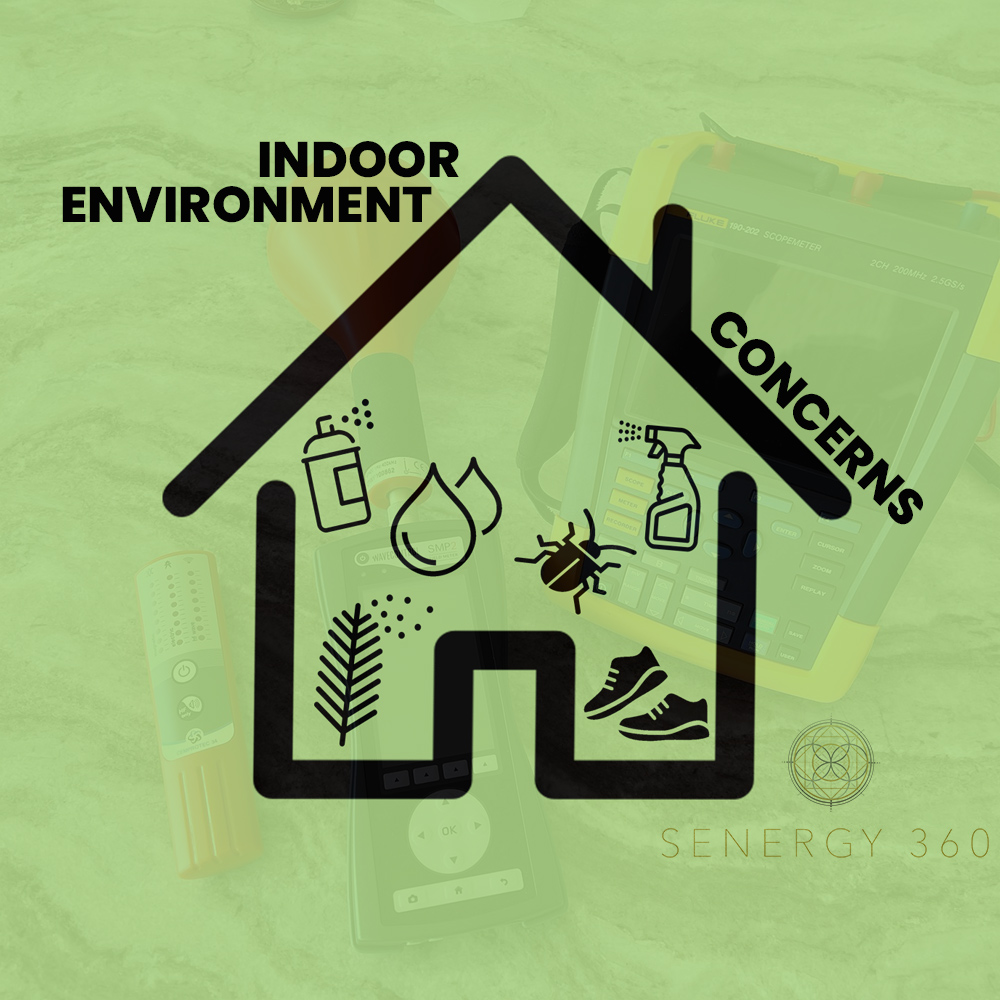There are various terms that encapsulate the range of concerns in an indoor environment. We’ve compiled a list to help you understand some of these issues:
- Sick Building Syndrome (SBS)
A building is considered “sick” when 20% or more of the occupants display symptoms of illness related directly to their time spent in the building. Symptoms include respiratory difficulties, dizziness, headache, skin rashes, nausea, drowsiness, and personality changes. Contributing factors to SBS involve the introduction of numerous off-gassing materials, a reduction in air exchanges due to tightened building envelopes, and a population more susceptible due to additional environmental exposures like outdoor pollution and poor diets.

Characteristics of SBS include:
- Acute health problems and discomfort linked to time in building
- No specific cause can be identified
- Symptoms abate outside of building
- >20% of occupants affected
- Building Related Illness
Building Related Illness is a defined illness with a known cause that originates within a built environment. It is usually due to one of the following:
- Over-exposure to chemicals: chemicals are present in combination and/or in excessive concentrations due to new construction, renovation, regular maintenance with toxic products, pesticide applications.
- Biological contamination: viruses, bacteria, and mold can be found and are frequently disseminated through contaminated mechanical systems, leading to conditions such as Legionnaires, Hypersensitivity Pneumonitis, and Humidifier Fever.
- Excessive exposure to electro-magnetic radiation within a building: this type of building related illness is not recognized by convention science, yet! But there are many reported cases of mass occupant complaints when new technologies have been installed on or pointing at a building.
- Other building related issues that do not show up as an acute condition such as the presence of asbestos or lead, but can lead to long-term serious health issues.

- Environmental Illness
Environmental illness stems from exposure to toxins in specific environments, whether at work, home, or during recreational activities. Symptoms arise as a result of exposure to a particular environment. Unfortunately, even though symptoms may initially be linked to one environment or substance overexposure, in some individuals, repeated exposure can lead to Multiple Chemical Sensitivities.
- Multiple Chemical Sensitivity (MCS)
Multiple Chemical Sensitivity is also known as Chemical Hypersensitivity, and Idiopathic Environmental Intolerance (IEI). This is a chronic condition where sufferers become symptomatic upon low levels of chemicals present in both the man-made and natural environment. Most of the population can tolerate these exposure levels. MCS may develop due to exposure to a contaminated building and can occur after a single substantial exposure or through prolonged exposure over time.
Symptoms are varied depending on individual physiology and predispositions and may include chronic fatigue syndrome, fibromyalgia, candida related illness, irritable bowel syndrome, leaky gut syndrome, gulf war syndrome, and autism.

- Electromagnetic-Hypersensitivity (EHS)

EHS is caused by exposure to man-made electro-magnetic radiation at various frequencies. With the escalating prevalence of wireless technology in our culture, we are seeing a rapid increase in EHS cases.
Conclusions
While the use of toxic chemicals in construction is commonplace today, there are people and organizations working to change this – to raise awareness of the dangers, to find safe alternatives, and to remove toxins from products. Unfortunately, there isn’t always a clear consensus on which chemicals raise concerns, and in reality, our understanding of the majority of chemicals currently in use remains limited. This is why we restrict the use of any and all chemicals in our building and construction.

